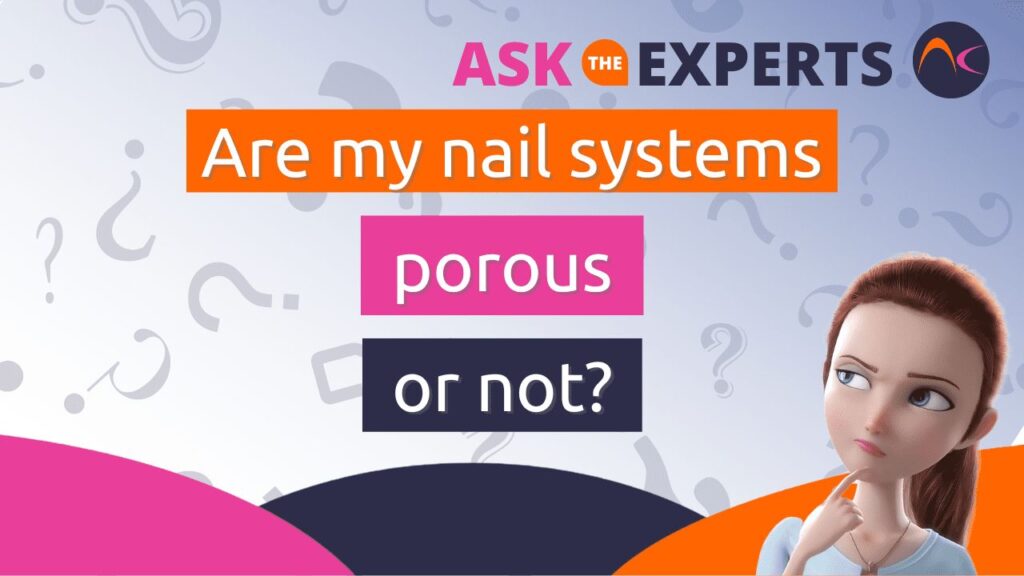Search for answers you are looking for.
Are my nail systems porous or not?
1.1k Views

Question:
My understanding is some L&P systems are porous, but UV gel is not. Top coats that don’t have a dispersement layer are non-porous and do not soak off. Is this correct?
Answer:
No, it is not correct. All nail systems are porous, just to different degrees. In fact, no type of artificial nail coating ever created is completely “non-porous”. For this reason, we should only talk about the porosity of a nail coating when compared to other nail coatings.
For instance, UV gels tend to be less affected by acetone when compared to two-part monomer liquid and polymer powder systems. Both types of enhancements are less affected by acetone than fiberglass wraps or nail glues. Nail polish is the most affected by acetone; therefore it is the easiest to remove. The ease of removal is also in the same order of porosity; UV gels are the least porous and nail polishes are the most porous, at least toward acetone. The more porous the nail coating is to acetone, the easier it is to remove. Therefore, UV gel is less porous to acetone than liquid/powder which is less porous than wraps. In this way, porosity helps determine the rate of penetration by acetone.
The natural nail is many hundreds of times more porous to water than to nail oils, due to its size and chemical makeup. Artificial nails are porous to many solvents and ingredients in nail oils. All nail coatings are all porous to both of these, but to different degrees. A general rule to remember is that the more porous the nail coating is to acetone, the more porous it will be to nail oils, as well. The reverse is also true. So, nail oils are more likely to penetrate Liquid and Powder nail coatings than they are to penetrate UV gels. Nail polish is the most likely nail coating to be penetrated by nail oils.
“Dispersement layer” is not the correct term to use. Most likely you are talking about the “inhibition layer” which is caused by oxygen inhibition of the surface cure. Oxygen at the surface prevents proper polymerization and that’s what is responsible for these sticky layers. Porosity depends mostly on the chemical composition of the cured nail coating and how well the nail coating is cured. Over-cured nail coatings will have lower porosity, while under-cured nail coatings have a much higher porosity. This explains why it is harder to remove a nail coating that has been over-cured. Under-cured leads to greater porosity, which is why under-cured nail coatings stain more easily. Their surfaces are more porous and can allow stains to accumulate under the surface to cause discoloration.


